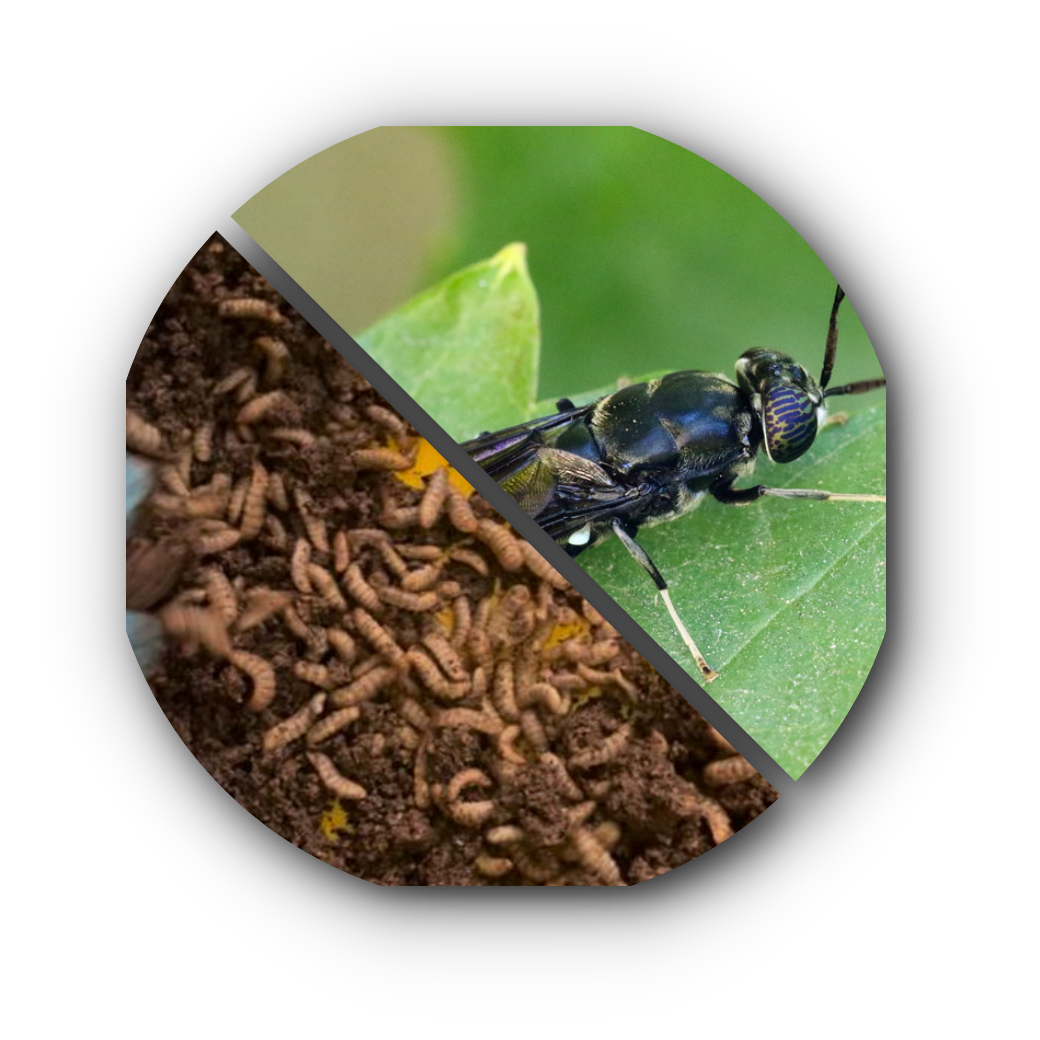Black Soldier Fly
Ingestion and excretion dynamics of microplastics by black soldier fly larvae and correlation with mouth opening size
Introduction
A 2023 study published in Environmental Pollution by Lievens et al. investigates the ingestion and excretion dynamics of microplastics by black soldier fly larvae (BSFL), focusing on how larval mouth opening size influences their capacity to consume and eliminate microplastic particles. With the global spread of microplastic contamination affecting not only aquatic but also terrestrial ecosystems, there is a growing need to understand how waste-processing organisms like BSFL interact with these pollutants. This research addresses sustainable waste management and insect-based feed production.
Key Findings From the Research
The study revealed that BSFL can ingest and excrete microplastics, but their ability to do so is strongly dependent on particle size and larval development stage. Specifically, larvae were found to ingest polyethylene microbeads smaller than or close to their mouth opening size. During early instars, when mouth size is small, larvae could only take up particles less than 50 µm. As they grew and their mouthparts enlarged, their capacity to ingest larger particles also increased.
Measurements showed that the larval mouth opening expanded from approximately 35 µm in early stages to about 220 µm in late instars. The critical threshold size for effective microplastic ingestion was estimated to be about 40% of the mouth opening diameter. Ingested particles that exceeded this threshold were not taken up and remained in the substrate.
The retention time of ingested microplastics in the larval gut was found to be short, typically less than 24 hours. Most particles were excreted efficiently, indicating a lack of significant long-term accumulation in the digestive tract. However, a small amount of microplastics was retained in the midgut and could persist briefly, especially for particles nearing the upper size limit of ingestion. Notably, microplastics were not detected in the pre-pupal stage, suggesting complete excretion before metamorphosis.
The researchers also confirmed that there was no evidence of biological fragmentation or breakdown of microplastic particles during gut passage, meaning that BSFL do not degrade plastics but merely pass them through the digestive system. The study used a combination of fluorescence microscopy, particle tracking, and larval morphometrics to quantify these dynamics with precision.
Why Is This Important
As BSFL are increasingly used in bioconversion systems to recycle organic waste into insect biomass, understanding their limitations in dealing with plastic-contaminated substrates is essential. The findings show that BSFL are not likely to bioaccumulate large quantities of microplastics, particularly when the particles are larger than their mouth opening. However, the presence of small microplastics in feedstock may still result in short-term gut residence, raising concerns about potential transfer through the food chain if larvae are harvested before complete excretion.
From a practical standpoint, this research provides important parameters for future BSFL waste processing systems, suggesting that pre-treatment of substrates to remove or reduce microplastic content, especially particles below 200 µm, could help minimize contamination risks in downstream products like insect protein. Additionally, the quantified relationship between larval mouth size and ingestion capacity can inform risk assessments and regulatory guidelines for insect-based feed production.
Reference
Lievens, S., Vervoort, E., Bruno, D., Van, T., Gianluca Tettamanti, Jin Won Seo, Poma, G., Covaci, A., Jeroen De Smet, & Der, V. (2023). Ingestion and excretion dynamics of microplastics by black soldier fly larvae and correlation with mouth opening size. Scientific Reports, 13(1). https://doi.org/10.1038/s41598-023-31176-9
